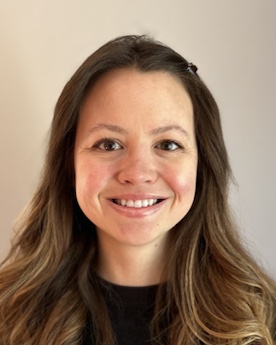

Yale University
Appointed in 1995

University of California, San Diego
Appointed in 2005
Read more
University of California, San Diego
Appointed in 2005


Stanford University
Appointed in 1981


Stanford University
Appointed in 1974

University of Colorado, Boulder
Appointed in 1999
Read more
University of Colorado, Boulder
Appointed in 1999

California Institute of Technology
Appointed in 2021
Read more
California Institute of Technology
Appointed in 2021
While cells are often studied in suspension or monolayers, more structured forms like tissues and biofilms dominate natural environments. In such settings, the concentrations of critical nutrients like sugars and O2 vary in space and time because cells produce and consume them locally, leading to measurable differences in physiology and gene expression between nearby cells. Spatially structured environments therefore represent many-body systems interacting on multiple timescales through a rich collection of chemical and physical processes. My overriding goal is to determine whether metabolism in mixed biofilms can be predicted quantitatively from simple models with intelligible and measurable parameters. I am currently developing Pseudomonas aeruginosa, a model bacterium that grows in suspension and as a biofilm, as a model for studying metabolic heterogeneity in spatially structured environments. It is commonly assumed that variation in the local O2 concentration is a primary determinant of metabolic heterogeneity in biofilms. As such, I am developing optical approaches to measure local O2 concentrations in real time to test whether a mathematical model can explain O2 dynamics, cell growth, and metabolic rates in biofilms.

Whitehead Institute for Biomedical Research
Appointed in 2019
Read more
Whitehead Institute for Biomedical Research
Appointed in 2019


Stanford University
Appointed in 1967

Dana-Farber Cancer Institute /
Ludwig Institute for Cancer Research, La Jolla
Appointed in 1996
Read more
Dana-Farber Cancer Institute / Ludwig Institute for Cancer Research, La Jolla
Appointed in 1996


Cornell University
Appointed in 1988

MRC Center, University Medical School, England
Appointed in 1985
Read more
MRC Center, University Medical School, England
Appointed in 1985

Salk Institute for Biological Studies
Appointed in 1992
Read more
Salk Institute for Biological Studies
Appointed in 1992


Yale University
Appointed in 1988

National Institutes of Health /
The Johns Hopkins University
Appointed in 1980
Read more
National Institutes of Health / The Johns Hopkins University
Appointed in 1980

Oxford University, England /
Yale University
Appointed in 1982
Read more
Oxford University, England / Yale University
Appointed in 1982


National Institutes of Health
Appointed in 1983


Carnegie Institute for Science
Appointed in 2007

University of California, San Francisco
Appointed in 1980
Read more
University of California, San Francisco
Appointed in 1980

Massachusetts General Hospital
Appointed in 2000
Read more
Massachusetts General Hospital
Appointed in 2000

Case Western Reserve University
Appointed in 1959
Read more
Case Western Reserve University
Appointed in 1959


University of Michigan
Appointed in 1973


Stanford University
Appointed in 1981

Weizmann Institute of Science, Israel
Appointed in 1971
Read more
Weizmann Institute of Science, Israel
Appointed in 1971

Stanford University School of Medicine
Appointed in 2012
Read more
Stanford University School of Medicine
Appointed in 2012


Cambridge University, England
Appointed in 1952


Yale University
Appointed in 1971


Yale University
Appointed in 1986

University of California, Davis
Appointed in 2012
Read more
University of California, Davis
Appointed in 2012

University of California, San Francisco
Appointed in 2005
Read more
University of California, San Francisco
Appointed in 2005

Yale University School of Medicine
Appointed in 1985
Read more
Yale University School of Medicine
Appointed in 1985

Massachusetts General Hospital
Appointed in 2023
Read more
Massachusetts General Hospital
Appointed in 2023
Mitochondria generate energy needed to power cells and multicellular organisms. Wrinkles in the inner mitochondrial membrane, known as cristae, concentrate molecular motors for energy production. However, it is unclear how the wrinkly cristae are formed. Dr. Michelle Fry will use a clever approach to investigate cristae formation in cells. She will introduce candidate protein/protein complexes into parasitic protist mitochondria. These mitochondria are smooth, making them amenable for testing with proteins are sufficient to generate cristae. Dr. Fry will use advanced electron microscopy techniques to image changes in mitochondrial morphology. Fry will conduct these studies in Dr. Luke Chao’s lab at Massachusetts General Hospital. These experiments will provide fundamental insights into mitochondrial biology and may provide clues for mitochondrial pathological dysfunction.
As a graduate student in Dr. Bil Clemons lab at the California Institute of Technology, Fry used structural biology to study the targeting of membrane proteins to the endoplasmic reticulum. Specifically, Dr. Fry captured several structural conformations of a protein chaperone, Get3. Fry demonstrated how conformational flexibility is important for Get3 to integrate multiple regulatory signals (binding partners, client proteins, nucleotide binding and hydrolysis). Dr Fry is now excited to use cryo-electron tomography to capture the conformational landscape of proteins that regulate mitochondrial cristae formation in cells.


University of Washington
Appointed in 2024
Mitochondria are cellular organelles that house their own DNA. There are hundreds to thousands of copies of the mitochondrial genome (mtDNA) in each cell. Often, mtDNA copies are not the same; rather, a fraction of them carries mutations. Moreover, the composition of mtDNA varies drastically across cells and cell types. Mitochondrial diseases manifest when the pathogenic mutations reach a high percentage in a substantial fraction of cells. However, it is still unclear how mtDNA mutations expand and how cell-to-cell variation of mtDNA composition is formed.
Dr. Yi Fu will address these questions in Dr. Jay Shendure’s lab at the University of Washington. Dr. Fu will develop a method to accurately genotype mtDNA at single-cell resolution and employ this method to monitor mtDNA mutations during differentiation. Fu will also combine this approach with CRISPR perturbation to identify factors that impact the mitochondrial mutation burden in various cell types. These experiments will uncover cell type-specific regulation of mitochondrial genome maintenance. Furthermore, Fu’s research may provide insight into novel therapeutic approaches for mtDNA-associated diseases.
Fu’s expertise in mtDNA stems from her graduate studies in Dr. Agnel Sfeir’s lab at New York University and Memorial Sloan Kettering Cancer Center. There Fu discovered that double-strand breaks in mtDNA activate the integrated stress response, highlighting the cellular program to cope with defective mitochondrial genome. Fu also investigated mtDNA deletions and their impact on cellular metabolism. Now, Fu will leverage genomics and single-cell technologies to elucidate the dynamic regulation of mtDNA during her postdoctoral research.


Indiana University
Appointed in 1980


Stanford University
Appointed in 1977


Columbia University
Appointed in 1987

National Cancer Institute / NIH
Appointed in 2021
Read more
National Cancer Institute / NIH
Appointed in 2021
Enhancers are distal cis-regulatory elements that control precise execution of transcriptional programs during development and in response to external stimuli. How enhancers find and activate their target genes, and what molecular activities are required for enhancer function remains a central outstanding question in the field. Recent advances in nascent RNA-sequencing uncovered widespread transcription from enhancers, which has become widely recognized as a robust signature of enhancer activity. However, mechanistic understanding of enhancer transcription, its regulation and, most importantly, functional role in gene activation is currently missing.
In my work, I aim to address these fundamental questions by using single-molecule and live-cell imaging approaches to characterize the intrinsic dynamics of enhancer transcription in single cells. To generalize my conclusions from individual enhancers to a genome scale, my ultimate goal is to develop high-throughput single-molecule approaches for systematic characterization of enhancer transcription. Using these new tools, I will investigate how transcription at enhancers and their target gene promoters is coordinated at the single-cell level to discover if these processes are functionally linked. Together, this work will be an essential step towards a deeper mechanistic understanding of enhancer function in gene activation and how enhancer perturbations can lead to severe developmental disorders and cancer.

MRC Center, University Medical School, England
Appointed in 1978
Read more
MRC Center, University Medical School, England
Appointed in 1978

University of Southern California, Los Angeles
Appointed in 1996
Read more
University of Southern California, Los Angeles
Appointed in 1996

Lawrence Berkeley National Laboratory /
University of California, Berkeley
Appointed in 2003
Read more
Lawrence Berkeley National Laboratory / University of California, Berkeley
Appointed in 2003

University of California, San Francisco
Appointed in 1998
Read more
University of California, San Francisco
Appointed in 1998


Princeton University
Appointed in 1992

University of Cambridge, England
Appointed in 1991
Read more
University of Cambridge, England
Appointed in 1991

University of Texas Southwestern Medical Center
Appointed in 2020
Read more
University of Texas Southwestern Medical Center
Appointed in 2020

California Institute of Technology
Appointed in 1976
Read more
California Institute of Technology
Appointed in 1976


Scripps Research Institute
Appointed in 2005

University of California, Berkeley
Appointed in 2006
Read more
University of California, Berkeley
Appointed in 2006

Public Health Research Institute of the City of New York
Appointed in 1955
Read more
Public Health Research Institute of the City of New York
Appointed in 1955

Whitehead Institute for Biomedical Research
Appointed in 1990
Read more
Whitehead Institute for Biomedical Research
Appointed in 1990


Fred Hutchinson Cancer Center
Appointed in 2015
With a high prevalence of sugar in our society, especially in the form of sugar-sweetened drinks, it is important to understand the relationships between sugar metabolism and critical events in cancer progression. Recent research shows that sugar metabolism can promote oncogenesis in cell culture models of breast epithelial cells. This research was done with the sugar glucose, but breast cancer cells also have the unique ability to uptake fructose, while normal breast epithelial cells do not. Fructose and glucose are both simple sugars that are present in equimolar amounts in most of the food we eat. Although fructose is naturally found in fruits and vegetables, it is also added as high fructose corn syrup to many drinks and processed foods. More research needs to be done on how cancer cells respond to conditions with fructose and glucose. I am using breast cancer cell culture models to investigate the effects fructose and glucose have on cancer cell growth. By focusing on differences in regulation of gene expression with exposure to different sugars, we aim to discover the mechanisms fructose uses to fuel cancer cell growth. We hope this work will lead to better informed dietary recommendations for breast cancer patients and those with an increased risk for breast cancer.


Rockefeller University
Appointed in 1991


University of California, Berkeley
Appointed in 2012